Why #IndonesianFires may be this century's greatest ecological disaster

For at least two months now, forest fires have been raging across Indonesia.
Every year, between August and October, vast tracts of forest land are cleared for palm oil, pulp and paper plantations. The planters mainly use the "slash and burn" method - cut the vegetation and burn it - since it's the fastest way to clear the land.
This year, the fires have turned into a catastrophe because of the unusually dry weather brought on by the El Nino.
In just the last six weeks, Indonesia has moved from sixth to the fourth largest emitter of carbon dioxide in the world. This is no small feat.
For months, Indonesia and vast areas of Southeast Asia have been enveloped by haze and smoke. The scale of loss is unimaginable. George Monbiot calls it the "greatest environmental disaster of the 21st century so far".
The harm to people's lives is incalculable. Schools have been shut and flights cancelled. Indeed, gangster Chhota Rajan's extradition from Bali has been delayed in part because the flights have been grounded.
Here are some numbers to put the scale of the devastation in perspective.
- The number of forest fires raging across Indonesia now.
- This is the second highest number of fires ever to be recorded, according to the Global Fire Emissions Database.
- The number has dropped recently due to rainfall in Kalimantan. By how much isn't clear yet.
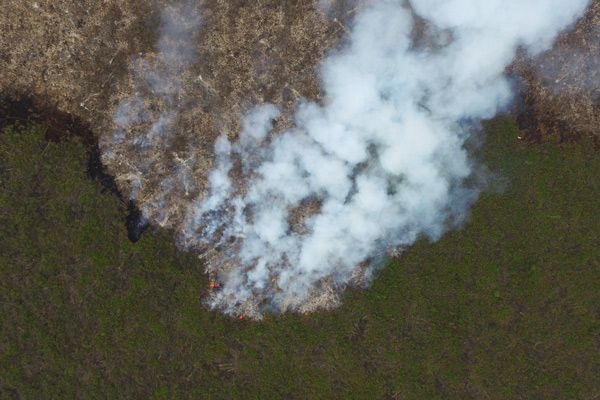
Smoke rises from a forest fire in this aerial photograph taken in Ogan Komering Ilir, South Sumatra, Indonesia, on 30 October. Photo: Dimas Ardian/Bloomberg via Getty Images
- The forest area destroyed by the fire.
- This is three times the area of Singapore, equivalent to the area of Kuwait, or the US state of New Jersey.
- The burning forests are home to the Orangutan and almost a third of its population is at the risk of dying in the blaze. The great ape is found only on the islands of Borneo and Sumatra and is classified as "endangered".
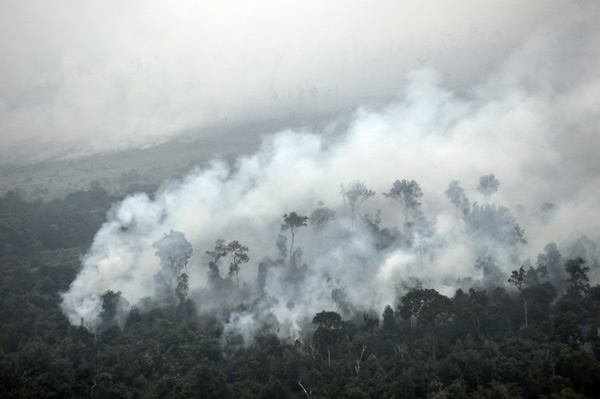
Smoke rises from a fire in Sumatran forest in Riau islands on 13 September as a helicopter from the National Agency for Disaster Management flies by. Photo: Sutanta Aditya/Anadolu Agency/Getty Images
- Cases of acute respiratory infections reported in Indonesia since 1 July.
- This could be only a fraction of the total cases as over 43 million persons are said to be affected by the smoke.
- "This is a crime against humanity of extraordinary proportions," the spokesperson of Malaysia's weather agency has said.
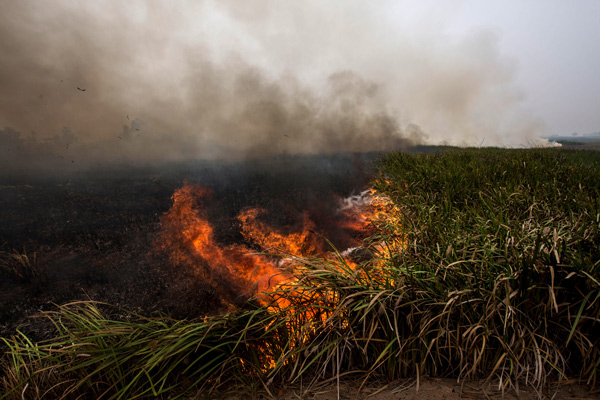
Fire burns peatland and fields at Sungai Rambutan village, Ogan Ilir district on 2 October 2 in South Sumatra. Photo: Ulet Ifansasti/Getty Images
- The level of tiny particulate matter called PM10 in every cubic metre of air. PM10 is a pollutant about a fifth of the width of a human hair.
- PM10 levels over 60 are considered harmful. Indonesia's current PM10 levels are classified as "very dangerous".
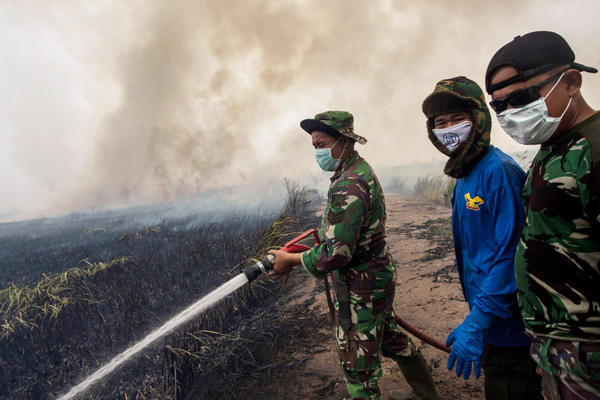
Indonesian soldiers extinguish the fire on burned peatland and fields at Sungai Rambutan village, Ogan Ilir on 2 October. Photo: Ulet Ifansasti/Getty Images
- Carbon emissions from the fires. This is as much as Brazil emits in an entire year.
- On just 14 October alone, emissions from the fires were 97% of the country's annual emissions.
- This means Indonesia's 2015 emissions are likely to cross 2.3 gigatonnes, more than that of Russia, the world's fourth worst polluter.

A National Agency for Disaster Management helicopter drops water over a forest fire in Riau islands on 13 September. Photo: Sutanta Aditya/Anadolu Agency/Getty Images
- The number of days Indonesia's daily emissions exceeded China's.
- China has the highest carbon emissions in the world, emitting over 28 megatonnes a day.
- On 47 days since the fires started, Indonesian emissions exceeded the daily emissions of the US, the world's second largest emitter.
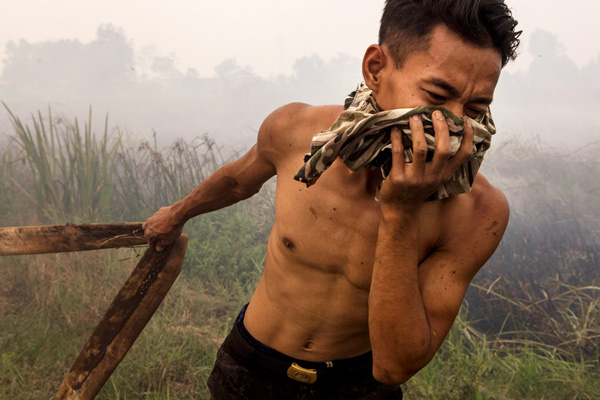
A firefighter holds a water pipe as they extinguish the fire in Sungai Rambutan village, Ogan Ilir district on 2 October. Photo: Ulet Ifansasti/Getty Images
- Economic loss from the fires, according to the Indonesian government.
- This is 1.1% of the country's GDP in 2014, as per the International Monetary Fund.
- And it's more than the GDP of Iceland, as well as 68 other countries in the world.
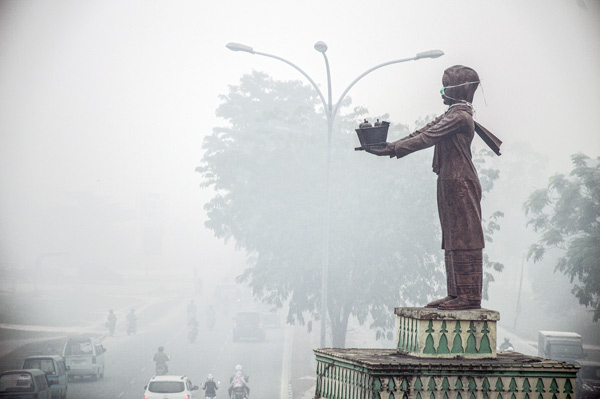
Photo: Getty Images







![BJP's Kapil Mishra recreates Shankar Mahadevan’s ‘Breathless’ song to highlight Delhi pollution [WATCH] BJP's Kapil Mishra recreates Shankar Mahadevan’s ‘Breathless’ song to highlight Delhi pollution [WATCH]](https://images.catchnews.com/upload/2022/11/03/kapil-mishra_240884_300x172.png)

![Anupam Kher shares pictures of his toned body on 67th birthday [MUST SEE] Anupam Kher shares pictures of his toned body on 67th birthday [MUST SEE]](https://images.catchnews.com/upload/2022/03/07/Anupam_kher_231145_300x172.jpg)






